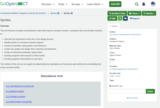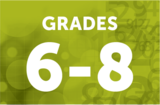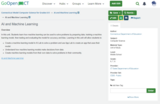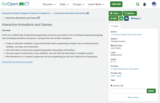CSDE Model Curricula Quick Start GuideEquitable and Inclusive Curriculum The CSDE believes in providing a set of conditions where learners are repositioned at the center of curricula planning and design. Curricula, from a culturally responsive perspective, require intentional planning for diversity, equity, and inclusion in the development of units and implementation of lessons. It is critical to develop a learning environment that is relevant to and reflective of students’ social, cultural, and linguistic experiences to effectively connect their culturally and community-based knowledge to the class. Begin by connecting what is known about students’ cognitive and interdisciplinary diversity to the learning of the unit. Opposed to starting instructional planning with gaps in students’ knowledge, plan from an asset-based perspective by starting from students’ strengths. In doing so, curricula’s implementation will be grounded in instruction that engages, motivates, and supports the intellectual capacity of all students.Course Description: Computer Science DiscoveriesIn grades 6 – 8 students explore various topics in computer science including programming, physical computing, web development, design, and data.Aligned Core Resources: The selection of core resources is a local decision. Ensuring alignment of resources to the standards is critical for success. The CSDE has identified Code.org as a highly aligned core resource after a rigorous review process. Additional Course Information: This course was developed with a focus on foundational concepts and is designed to support exploration and discovery. This allows students to develop an understanding of these concepts through “play” and experimentation. The course requires and assumes a 1:1 computer lab or setup such that each student in the class has access to an Internet-connected computer every day in class. There are a variety of ways to implement this course to provide flexibility based on the local context. The course consists of seven units, each with two chapters. The most essential content from each unit is always contained in the first chapter of the unit, and the second chapter tends to focus on applying those skills to larger projects. Habits of Mind/SEIH/Transferable Skills Addressed in the Course: This course is built around a core set of student practices. These practices are high-level skills and dispositions that students should develop. Therefore, the following should be addressed throughout the course: Problem Solving Persistence Creativity Collaboration Communication Figure 5.2: K-12 Computer Science Framework. (2016). Retrieved from http://www.k12cs.orgVocabulary:Vocabulary is a way to provide opportunities for students to use academic and content language to communicate about how they solved a problem, describe their reasoning, and demonstrate understanding. Vocabulary is inclusive of key words and phrases. Vocabulary work in computer science should include words that are traditionally used and regularly appear in academic language as well as words that are specific to the discipline.Computer Science 6 – 8 VocabularyInterdisciplinary Connections:Computer Science (CS) in grades 6 - 8 can be integrated within the curriculum of other content areas or offered as a ‘standalone’ course, depending on the school’s program. This flexible implementation allows schools the choice to determine how they will ensure that all students will have the opportunity to learn CS. The followings tasks provide connections between learning computer science and other subjects enabling computer science to be taught through an integrated approach. For a 'standalone' course approach see the units below.Math Connections:Exponents and Pattern Recognition Tennessee Department of Education and Tennessee STEM Innovation Network (TSIN)6.EE.A.2 Write, read, and evaluate expressions in which variables stand for numbers. Write expressions that record operations with numbers and with variables. Evaluate expressions at specific values of their variables. Include expressions that arise from formulas used in real-world problems. Perform arithmetic operations, including those involving whole number exponents, in the conventional order when there are no parentheses to specify a particular order (Order of Operations).6.EE.C.9 Use variables to represent two quantities in a real-world problem that change in relationship to one another. a. Write an equation to express one quantity, thought of as the dependent variable, in terms of the other quantity, thought of as the independent variable. Analyze therelationship between the dependent and independent variables usinggraphs and tables, and relate these to the equation7.EE.B.4 Use variables to represent quantities in a real-world or mathematical problem, and construct simple equations and inequalities to solve problems by reasoning about the quantities.Mean and Median EDC6.SP.A.3 Recognize that a measure of center for a numerical data set summarizes all of its values with a single number, while a measure of variation describes how its values vary with a single number.6.SP.B.5.C Summarize numerical data sets in relation to their context, such as by giving quantitative measures of center (median and/or mean) and variability (interquartile range and/or mean absolute deviation), as well as describing any overall pattern and any striking deviations from the overall pattern with reference to the context in which the data were gathered.6.SP.B.5.D Summarize numerical data sets in relation to their context, such as by relating the choice of measures of center and variability to the shape of the data distribution and the context in which the data were gathered.Music Connections:Algorithms and Music Tennessee Department of Education and Tennessee STEM Innovation Network (TSIN)MU:Re9.1.6.a - Apply teacher-provided criteria to evaluate musical works or performances.MU:Re9.1.7.a - Select from teacher-provided criteria to evaluate musical works or performances.MU:Re9.1.8.a - Apply appropriate personally-developed criteria to evaluate musical works or performances.Social Studies Connections:Data Mining and Civilization Traits Tennessee Department of Education and Tennessee STEM Innovation Network (TSIN)6.Inq.4.e. Analyze how a specific problem can manifest itself at local, regional, and globallevels over time, identifying its characteristics and causes.CCSS.ELA-LITERACY.RI.6.2 Determine a central idea of a text and how it is conveyed through particular details; provide a summary of the text distinct from personal opinions or judgments.CCSS.ELA-LITERACY.RI.6.4 Determine the meaning of words and phrases as they are used in a text, including figurative, connotative, and technical meanings.CCSS.ELA-LITERACY.RI.6.7 Integrate information presented in different media or formats (e.g., visually, quantitatively) as well as in words to develop a coherent understanding of a topic or issue.CCSS.ELA-LITERACY.RI.6.10 By the end of the year, read and comprehend literary nonfiction in the grades 6-8 text complexity band proficiently, with scaffolding as needed at the high end of the range.ELA Connections:Using Computational Thinking to Write an Argumentative Essay Tennessee Department of Education and Tennessee STEM Innovation Network (TSIN)CCSS.ELA-LITERACY.W.7.1 Write arguments to support claims with clear reasons and relevant evidence.Introduce claim(s), acknowledge alternate or opposing claims, and organize the reasons and evidence logically.Support claim(s) with logical reasoning and relevant evidence, using accurate, credible sources and demonstrating an understanding of the topic or text.Use words, phrases, and clauses to create cohesion and clarify the relationships among claim(s), reasons, and evidence.Provide a concluding statement or section that follows from and supports the argument presented.Science Connections:Catching the Big Bass with Data Analysis Tennessee Department of Education and Tennessee STEM Innovation Network (TSIN)MS-LS2-1 Ecosystems: Interactions, Energy, and Dynamics Analyze and interpret data to provide evidence for the effects of resource availability on organisms and populations of organisms in an ecosystem.Science and Engineering PracticesPlanning and carrying out investigationsAnalyzing and interpreting dataSTEM Connections:Computational Thinking and Evaluating a Crime Scene Tennessee Department of Education and Tennessee STEM Innovation Network (TSIN)Science and Engineering PracticesAsking questions and defining problemsObtaining, evaluating & communicating informationCCSS.ELA-LITERACY.RI.6.1 Cite textual evidence to support analysis of what the text says explicitly as well as inferences drawn from the text.CCSS.ELA-LITERACY.RI.6.2 Determine a central idea of a text and how it is conveyed through particular details; provide a summary of the text distinct from personal opinions or judgments.CCSS.ELA-LITERACY.L.6.6 Acquire and use accurately grade-appropriate general academic and domain-specific words and phrases; gather vocabulary knowledge when considering a word or phrase important to comprehension or expression.










